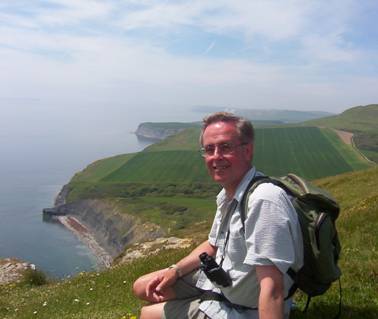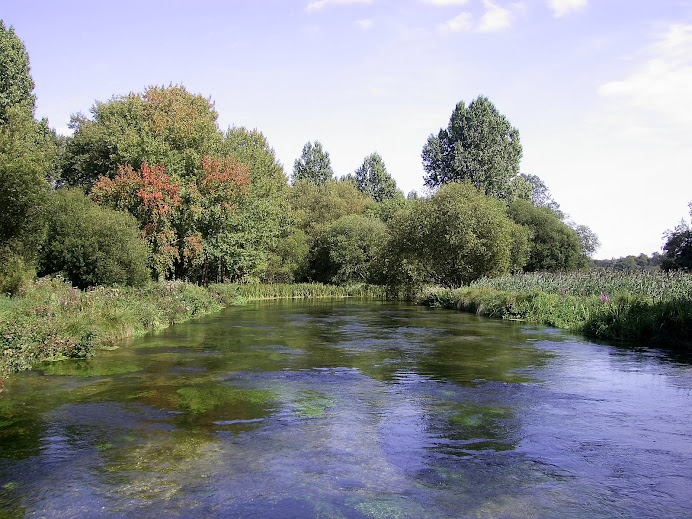One effect of all the rain we have experienced recently is the tremendous growth of plants, particularly weeds. Kate and I spent a peaceful couple of hours yesterday weeding part of our allotment. We had planned to continue this morning (Saturday) but it is raining again. While we were quietly working away I was listening to all the noise around- the roar of two motorways, each about a kilometer away, the traffic on Passfield Avenue and Derby Road and the occasional take off of a plane from Southampton airport, a kilometer in the other direction.
Most of the town of Eastleigh is hemmed in between the M3 to the west, the M27 to the south and the airport to the East. The motorways are heavily congested and occasionally gridlocked. Traffic flow around the town is poor; it can sometimes take an hour to travel a couple of kilometers. Air pollution is bad. Monitoring sites in various places around the town frequently exceed UK National Air quality standards and mean annual levels are above safety limits.
Eastleigh Borough Council will soon be examining plans to build 452 houses on South Street Allotment site and an unknown number of houses on the Woodside Road Allotment site. For each new dwelling there will be an estimated additional 6 traffic movements. What will happen to the Nitrogen Dioxide levels? They will rise further. Do the people of Eastleigh want to live in an increasingly unhealthy environment?
In the 1970's I conducted a piece of research on the park lakes of Liverpool for my M. Phil. degree. The 7 Liverpool parks were constructed because "the researches of sanitary science show incontrovertibly that the general health decreases and the rate of mortality increases in proportion to the density of population in a given area......it was suggested to construct a series of parks in such a relation to each other as will secure a central line of open space, to act as a kind of lung which will in a few years be the heart of Liverpool." (Anon 1868 - quoted in my thesis).
It appears to me that those 19th century Liverpool planners were more enlightened than 21st century Lib. Dem Councillors who are intent in pushing through plans to destroy places which have been public open spaces for over 80 years. By building more houses and roads they will further damage the health of Eastleigh people.
Mean annual Nitrogen Dioxide levels at a few sites around Eastleigh
Notes
Figures are in microgrammes per cubic metre, μgm-3
The National Air quality standard for Nitrogen dioxide is a maximum annual mean of 40 μgm-3 with 200 μgm-3 as a maximum which must not be exceeded more than 18 times in a year.
References
1. http://www.airquality.co.uk/archive/site_search.php
2. http://www.airquality.co.uk/archive/laqm/tools.php?tool=background04
3. http://www.airquality.co.uk/archive/laqm/tools/95_2004.csv
4. http://www.airquality.co.uk/archive/data_and_statistics.php?
Saturday, 30 June 2007
Air pollution: the consequence of more building in Eastleigh
Subscribe to:
Post Comments (Atom)

.jpg)
2 comments:
Your blog is very interesting - keep it up. It is nice to hear someone concerned about the environment enough to take on the Eastleigh Borough Council who do not really seem to have a green agenda apart from increasing recycling in some rather dubious ways.
So how should we oppose more building developments in Eastleigh such as they plan for the allotments? These Councillors pay little attention to other people's views.
Good luck with that. Sadly, even if the councillors are on your side, the developers will simply appeal the decision and, as soon as they receive a judgement in their favour, the right for further appeal is lost.
See, for example, here: http://www.gosport.gov.uk/gbcplanning/ApplicationDetails.aspx?ID=15438/14 - a planning application which was unanimously thrown out by the local council (because it was ridiculously unsustainable) but which was forced through on appeal.
Sadly, if you live in the South East, you've got to get used to the idea that any spare* land needs to have a block of flats on it. Or, preferably, two.
*ie as yet unoccupied by flats.
Post a Comment